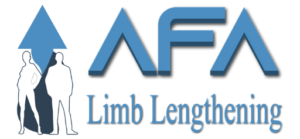Alessandro Codivilla of Bologna was the first to apply skeletal traction for bone lengthening. He used acute forced lengthening for short distances under narcotics. He described another technique for larger distances by continuous extension, using distraction with a calcanean pin and oblique osteotomy, followed by traction of 25–30 kg. More lengthening can then be achieved by applying more traction in stages. One-stage lengthening was developed by Fassett using an osteotomy, inserting a bone graft and fixating with a plate. However, this procedure was followed by many serious complications .
In 1932, Abbot presented his experience with lower limb lengthening of 73 patients (45 tibial lengthenings) at the Shriners’ Hospital for Crippled Children in St. Louis. The basic principles stated in this paper were traction and counter traction through the bone, slow continuous traction to overcome the resistance of the soft tissues and accurate contact and alignment of bone ends. He described in detail the basic principles of tibial lengthening, including the application of two pins above and below the osteotomy, connected to a special apparatus. The drill pins were made of stainless steel, not ordinary steel, as it is less irritating to the soft tissues. The operative steps were: lengthening of the Achilles tendon, osteotomy of the fibula, insertion of the pins, application of the apparatus, osteotomy of the tibia and closure of the wound with drainage. Tibial osteotomy had to be performed with minimal soft tissue dissection to keep the blood supply to the bone and guard against infection. The surgeon had to wait for 1 week until the swelling had gone down before distraction. This was the first description of the waiting period before the Ilizarov era. The average distraction rate was 1.6 mm per day and the period of traction was 4 to 5 weeks. The apparatus was kept in place for 8 to 10 weeks followed by removal and application of a plaster cast. Follow-up X-rays were taken every 2 to 3 weeks to check the bone formation. The age of patients ranged from 8 to 19 years. The magnitude of tibial lengthening ranged from 3.81 to 8.89 cm. They reported excellent results with tibial lengthening but less favourable results with the femur and a higher rate of complications. Then, Dickson and Diveley reported on an apparatus that used Kirschner wires rather than larger diameter pins to minimize soft tissue damage. The method developed by Wagner gained popularity in Europe and the US; the method consisted of 3 operations. The first operation was the application of unilateral external fixation and a diaphyseal osteotomy. There was no waiting period, so acute operative lengthening for 5 mm was performed, followed by daily distraction of about 1.5 mm. The second operation was plating and bone graft. The third operation was plate removal and casting. However, a high rate of complications were recorded.
Most of our contemporary knowledge of bone lengthening comes from the Ilizarov method. Ilizarov started his work in 1951 by treating a patient with a bone defect using a circular frame and transfixation tensioned wires. Then he discovered the biological law of tension stress or distraction histeogenesis and applied this principle to treat a wide variety of conditions such as nonunion, osteomyelitis, dwarfism, congenital deformities, some bone tumours, bone defects, fractures and bone shortening. Recently, hexapodal computer assisted circular frames such as the Taylor Spatial Frame have gained in popularity. The next step in development was the application of self distraction motorized nails (a magnetically driven, titanium intramedullary nail) to avoid the complications of external fixation and gain rapid rehabilitation. However, Ilizarov’s principles still are the cornerstones of all bone lengthening procedures.

